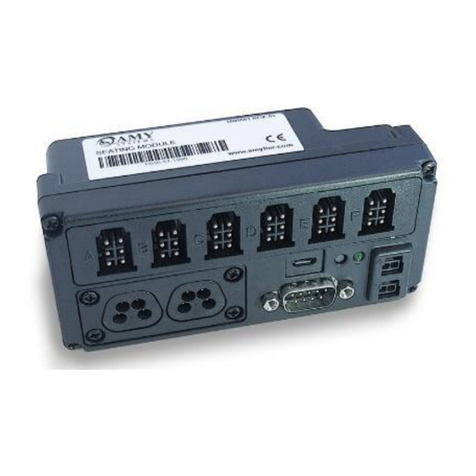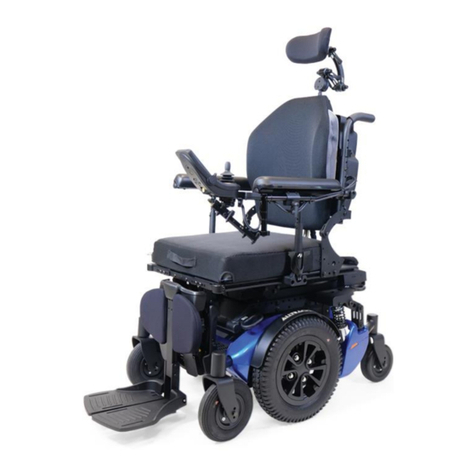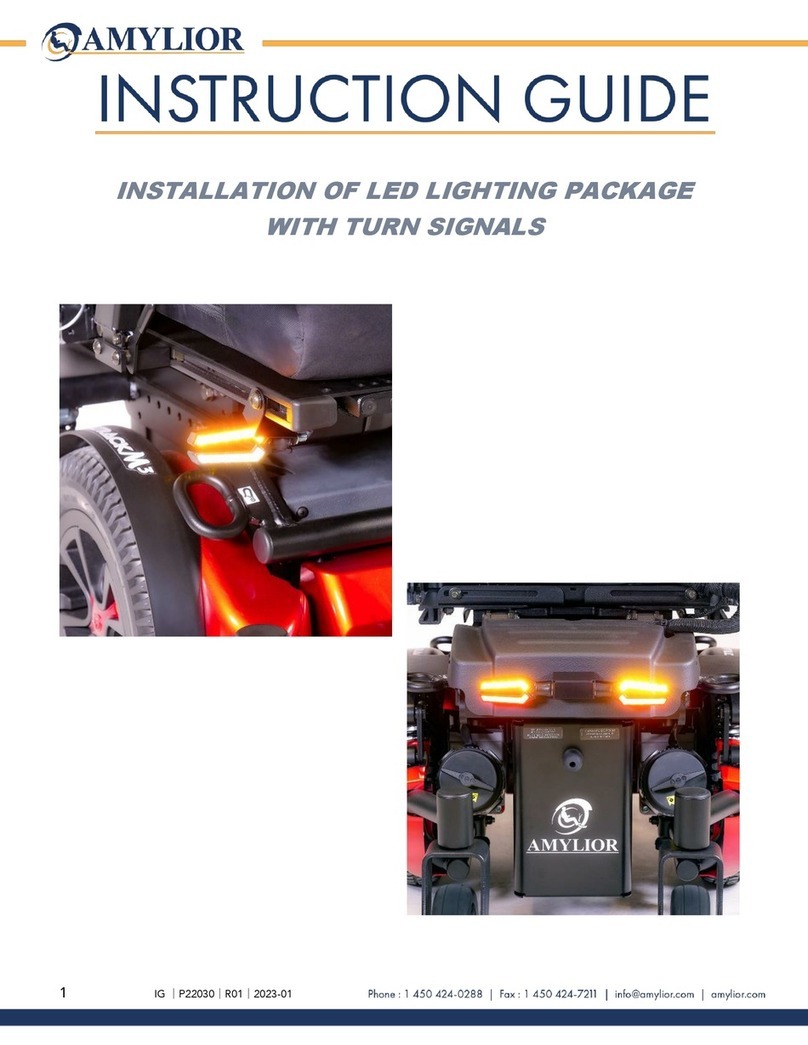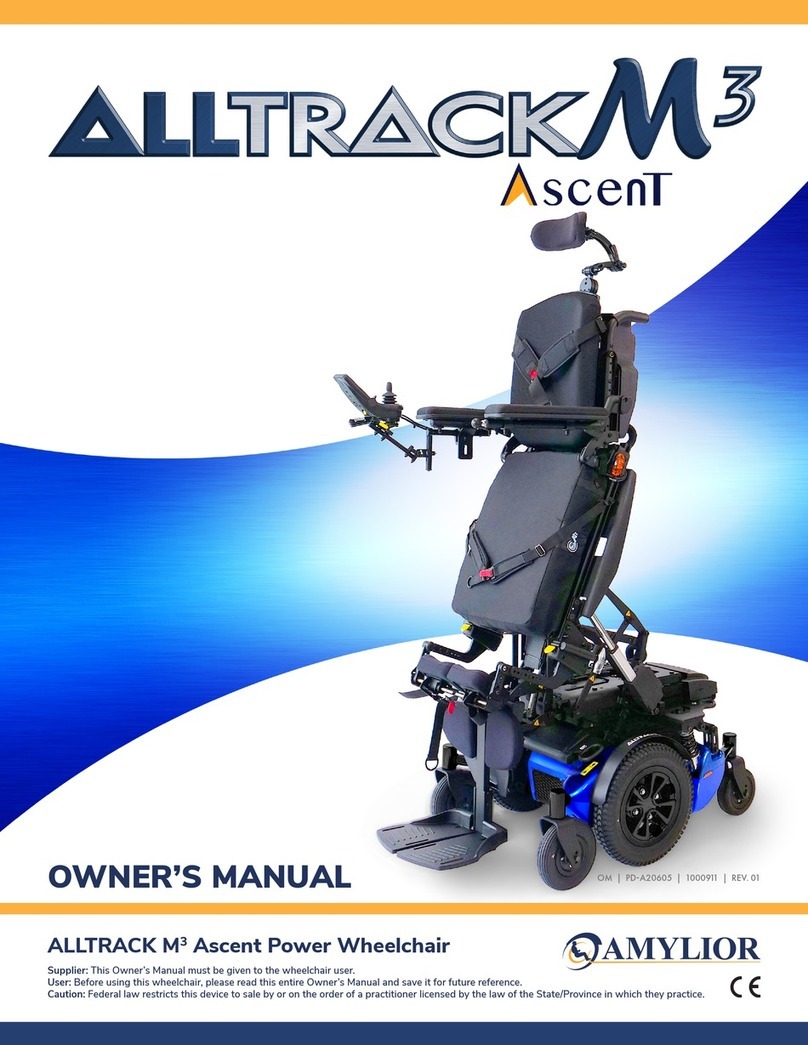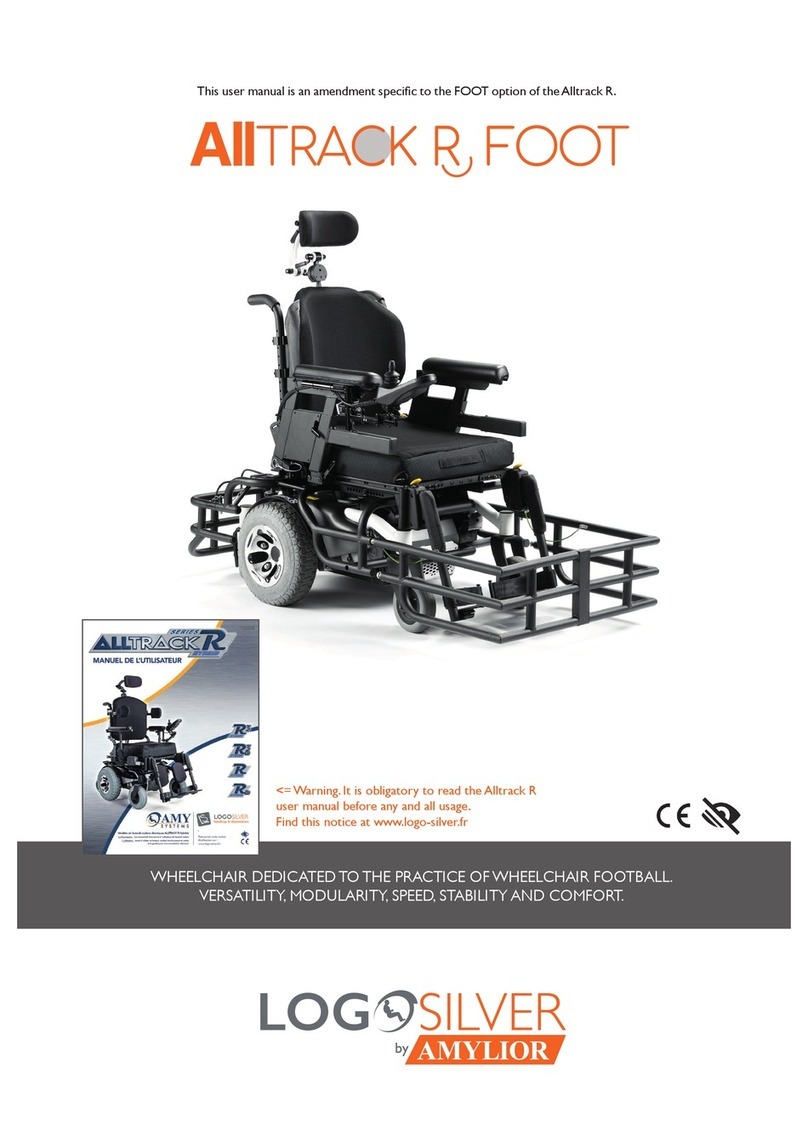
P·4
CONTENTS
7.5.4. SEAT INCLINATION...................................................................................................................................... 27
7.5.5. FOLDING THE RECARO BACKREST FOR TRANSPORTATION .................................................... 27
7.5.6. SHOCK-ABSORBERS..................................................................................................................................... 28
7.5.7. TYRE PRESSURE.............................................................................................................................................. 29
7.6. TRANSFERING INTO THE CHAIR............................................................................................................ 30
7.7. POWERING ON AND OFF......................................................................................................................... 31
7.7.1. ELECTRICAL SYSTEM PROTECTION ...................................................................................................... 31
7.7.2. FUSE.................................................................................................................................................................... 31
7.7.3. POWERING ON ............................................................................................................................................. 31
7.7.4. POWERING OFF ............................................................................................................................................ 32
7.8. JOYSTICK CONTROLLER............................................................................................................................ 32
7.8.1. JOYSTICK.......................................................................................................................................................... 32
7.8.2. JOYSTICK POWER SUPPLY ......................................................................................................................... 32
7.8.3. RAIN AND WATER......................................................................................................................................... 32
7.8.4. JOYSTICK CABLE ........................................................................................................................................... 32
7.8.5. CONTROLLER PROGRAMME.................................................................................................................... 33
7.8.6. USAGE PRECAUTIONS................................................................................................................................ 33
7.8.7. LCD JOYSTICK................................................................................................................................................ 34
7.8.8. CJSM2-BT JOYSTICK (OPTIONAL)........................................................................................................... 38
7.8.9. LOCKING THE CONTROL SYSTEM ........................................................................................................ 45
7.8.10. SCREEN ............................................................................................................................................................. 46
7.9. DRIVING ADVICE........................................................................................................................................... 47
7.10. BATTERIES AND CHARGING .................................................................................................................... 47
7.10.1. BATTERIES ........................................................................................................................................................ 47
7.10.2. CHARGING OF BATTERIES........................................................................................................................ 48
7.10.3. BATTERY BREAKING-IN .............................................................................................................................. 48
7.10.4. CHARGING PROCEDURE........................................................................................................................... 49
7.10.5. BATTERY GAGE ON THE LCD SCREEN................................................................................................. 50
7.10.6. PUBLIC TRANSPORT...................................................................................................................................... 51
7.10.7. BATTERY RECYCLING AND DISPOSAL ................................................................................................. 51
VIII. MALFUNCTION AND TROBLE-SHOOTING ........................................................................ 51
8.1. DIAGNOSIS AND TROBLE-SHOOTING ................................................................................................. 51
8.2. SOLVING COMMON PROBLEMS.............................................................................................................. 52




